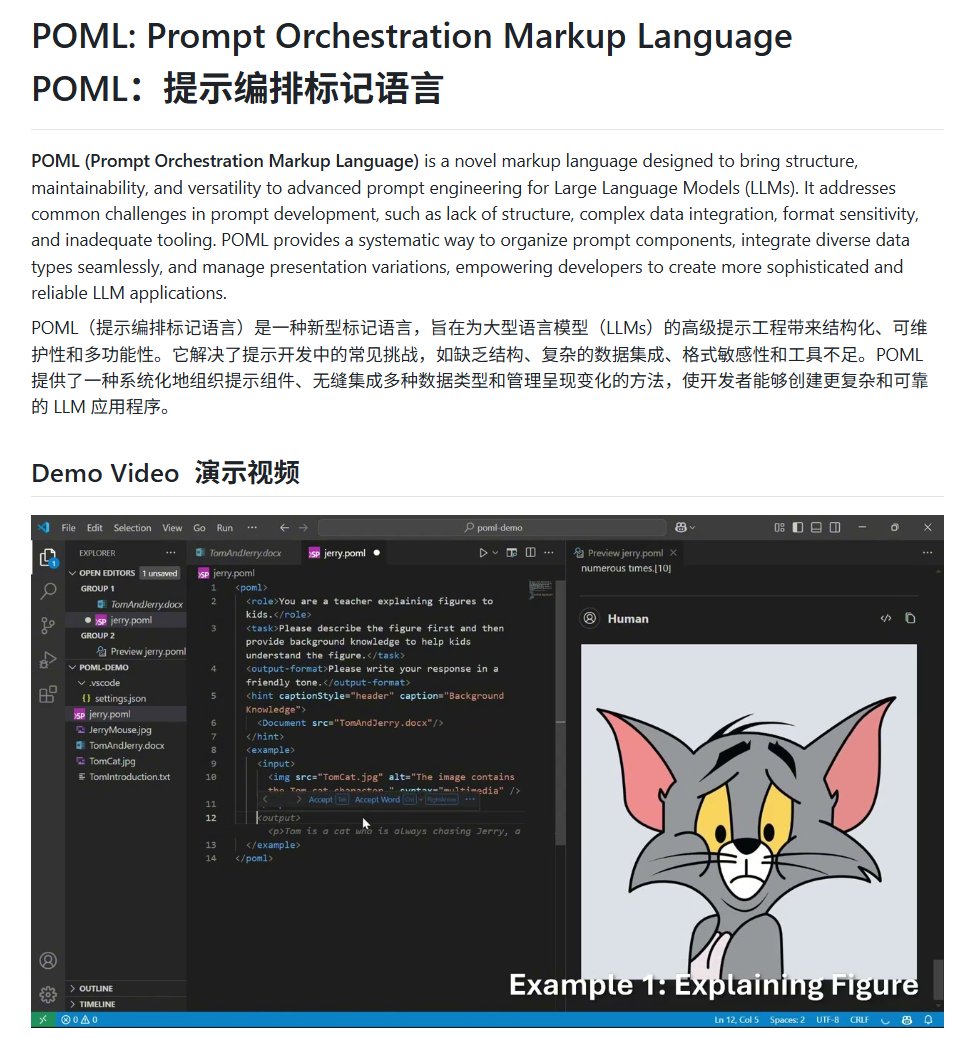Microsoft Introduces POML: A Structured Approach to AI Prompt Engineering
Microsoft Launches POML for AI Prompt Engineering
Microsoft has introduced the Prompt Orchestration Markup Language (POML), a new markup language specifically designed for structured prompt engineering in large language models (LLMs). This development aims to address challenges in traditional prompt development by offering a modular and maintainable approach.
Core Features of POML
POML utilizes an HTML-like syntax, breaking down complex prompts into semantic components such as ,, and ``. This modular design enhances readability, reusability, and maintainability. According to Microsoft, POML solves key issues in traditional prompt engineering, including lack of structure, complex data integration, format sensitivity, and insufficient tool support.
Developers can systematically organize prompts with POML, embedding various data types (text, tables, images) and adjusting output formats using a CSS-like styling system. This reduces instability caused by format changes in LLMs.

Tool Support: VS Code Extension and SDKs
POML is accompanied by a robust ecosystem of development tools. Its Visual Studio Code extension provides syntax highlighting, context-aware auto-completion, real-time previews, and error diagnostics. Additionally, POML supports SDKs for Node.js and Python, enabling seamless integration into existing workflows and LLM frameworks.
For example, a simple POML script can reference an image using , define tasks with, and specify output requirements with ``, streamlining the creation of structured prompts.
Community Reactions: Innovation or Redundancy?
The release of POML has sparked mixed reactions. Some developers applaud its structured design and template engine (supporting variables, loops, and conditional statements), which simplify complex prompt development. However, critics argue that POML resembles XML, potentially increasing the learning curve for prompt engineering.
Others question its necessity, noting that advancements in Agentic AI and tool calling have reduced LLMs' sensitivity to prompt formats. Skeptics suggest that POML might overcomplicate what could otherwise be straightforward processes.
Potential Applications and Future Outlook
POML shows promise in several scenarios:
- Dynamic content generation
- A/B testing of prompt formats
- Multi-modal instruction generation
For instance, developers can create templates for sales reports or test different output styles by switching stylesheets. Microsoft highlights POML’s decoupled design, which separates content from presentation, making it adaptable across LLM models.
As the open-source community grows around POML and its toolchain matures, it could become a significant standard in prompt engineering.
Key Points:
- Structured Design: POML introduces modular components for better prompt organization.
- Tool Ecosystem: Includes VS Code extensions and SDKs for Node.js/Python.
- Community Debate: Some praise its innovation; others see it as unnecessary complexity.
- Future Potential: Applicable in dynamic content generation and multi-modal tasks.